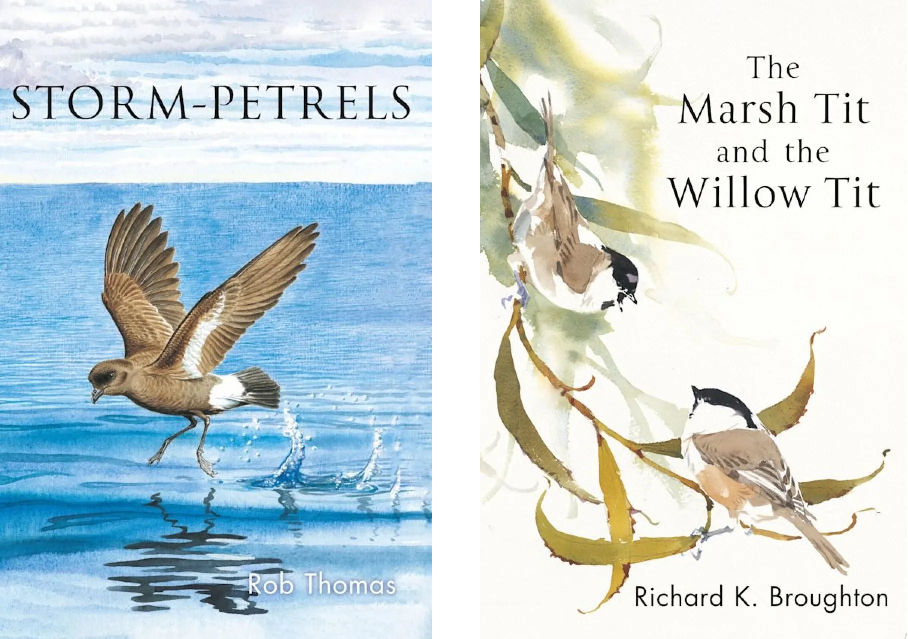The T & AD Poyser imprint of Bloomsbury has a long tradition of highlighting birds about which little has been written away from the scientific journals. In these two recent books they have once again achieved this, and they have found experts in their field to summarise all that is known in a readable form.
Most of us rarely get to see storm-petrels, and yet some species are among the most numerous birds in the world. They are a fascinating group, and some are only just revealing their secrets to us. Rob Thomas’s book on storm-petrels comes at a time when interest in these birds is at an all-time high, and newly described species have increased the total to 28. Thomas is a Senior Lecturer in Zoology at Cardiff University and has been involved in storm-petrel studies since the age of 16. Although there are many books on seabirds, this is the first definitive work on storm-petrels. Rob has focused on the European Storm-petrel, but this book tackles all species within the family, of which there are 18 in the northern hemisphere and ten in the southern hemisphere. There are opening chapters describing the family and the aspects that make storm-petrels different from other petrels – their smaller size and shorter but broader wings. Every part of their lives is explored, from diet and foraging behaviour to their sensory world, which reveals that they have substantially enhanced olfactory abilities which they use to locate food through smell. Two chapters examine in detail all the storm-petrel species with information on identification, distribution, and everything else that is known. In some cases that information is still sparse, and there are plenty of avenues to research.
Marsh and Willow Tits are both Red Listed in the UK, and for many in southern England the latter species is now completely absent, having previously been a familiar but mostly scarce resident. Nobody in the UK has studied these birds more closely than Richard Broughton, who has a PhD on habitat modelling and the ecology of Marsh Tits and is an ecologist and GIS specialist at the Centre for Ecology & Hydrology. With just two species to compare he focuses on the things that make these superficially similar species more different than we might have imagined. There are chapters on communication, habitat, feeding, social organisation, breeding, movements and survival. A final chapter explores the outlook for both species. Sadly, in the UK and parts of Europe, this looks quite bleak, with declines in many areas. Woodland conservation management has so far had little success in supporting populations of either species. There are also possible impacts from increased competition with more dominant tits and nest predation by Great Spotted Woodpeckers, but both require further research. In addition, the effects of climate change are widely suspected to be driving distribution changes. This book is a reminder that there are many opportunities for us to try and understand these birds better through intensive ringing schemes and territory assessments.
These are both great additions to the Poyser stable, which according to my bowing bookshelf now has more than 100 titles.
